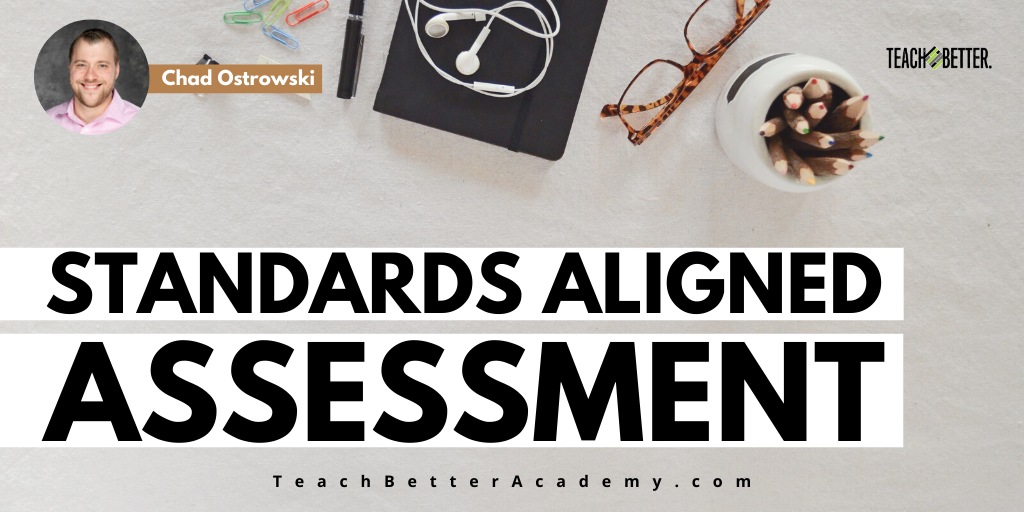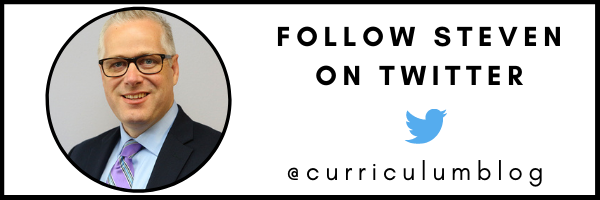TL;DR:
- Teaching and learning should be framed around a desired set of learning targets.
- Identify how teachers will measure student understanding.
- The classroom should be a safe place where students are receiving feedback from their teacher, peers, and own reflections.
- 4 key reflection questions to consider before and after a unit are shared.
- Find ways to celebrate small wins in your classroom.
Educators cannot march through pacing guides, state standards, or the syllabus and hope that student understanding occurs. “Teach, Test, and Hope for the Best” (Wiggins and McTighe, 2005, p. 3) is not a strategy. Assessment supports teaching and learning through careful analysis and reflection. If a school district purchases test prep books, provides benchmark tests for the sole purpose of increasing high-stakes test scores, and has a Boot Camp for test review, then the educators are focused on testing, not assessment.
Assessment comes in many forms and supports continuous improvement.
Formative assessment is seen when teachers use strategies such as pre-assessments, quick writes, blogging, videos, accountable talk, reflection activities, and tickets-out-the-door. When students view assessment as part of the learning process, it becomes a natural part of their routine.
The questions that teacher teams ask about assessment set the stage for a culture of learning. Dr. Pam Moran, former Superintendent of Albermarle County Schools (VA), describes a culture of learning: “Every day when you get up, think about what’s really worth learning and what’s worth teaching. It is never going to be passing the test. It’s always going to be about: How do kids come to school, get excited, and stay excited?” (Dr. Pam Moran via BAM Radio Interview with Vicki Davis).
The overarching question for educators should be: Does [the assessment] provide teachers and students with the information they need to ensure that all students learn at higher levels (Stiggins & DuFour, 2009, p. 644)? Some schools spend a great amount of time writing and designing assessments. It is difficult to focus on continuous improvement if teacher teams are focused on completing the next assessment or scoring the most recent assessment. Weekly meetings and a three-week testing window do not guarantee results. How does your teacher team seek to sharpen the saw and utilize assessments to support growth for all educators and students?
Assessment can create lifelong learners if educators shift from testing to assessing student growth and understanding. Click To TweetAssessment Matters
Questions About Assessment: What is the desired outcome?
Teacher teams need to begin with the ‘end in mind.’ Teaching and learning should be framed around a desired set of learning targets. In On Target With Learning Targets, Erkens (2015) outlines criteria for creating and measuring learning targets.
Over sixty years ago, Ralph Tyler wrote Basic Principles of Curriculum and Instruction (1949). In the Introduction to the book, Tyler outlined four fundamental questions which should be answered in developing any curriculum and plan of instruction.
Tyler’s Four Fundamental Questions
- What educational purposes should the school seek to attain?
- What educational learning experiences can be provided that are likely to attain these purposes?
- How can these educational experiences be effectively organized?
- How can we determine whether these purposes are being attained?
Teacher teams should have flexibility and autonomy when determining lesson plans, assignments, and assessments. However, the desired outcomes should not vary from one classroom to the next. Identifying desired outcomes should be the first step for teacher teams, not determining the assignments, field trips, and guest speakers.
Questions About Assessment: How will we measure student understanding?
If step one is determining the desired learner outcomes, then step two is identifying how teachers will measure student understanding. One teacher may assign a group project, while another teacher assigns an essay. Flipgrid is a tool that allows students to share their answers via video. Padlet is an online tool that allows students to post videos, comments, or replies to other students.
When teacher teams are clear on the desired learner outcomes, it becomes easier to measure student understanding. Sheninger and Murray (2017) have coined the term Return on Instruction (ROI). What is the ROI in your school? How will you know if students have a deeper understanding? What will students be able to know and do as a result of instruction?
Questions About Assessment: How will teachers provide timely feedback to support student understanding?
Timely feedback is critical in a teaching and learning environment. Have you ever taught a teenager how to drive? Feedback takes place prior to putting the car in reverse, during driving, and after driving. The classroom should be a safe place where students are receiving feedback from their teacher, peers, and own reflections.
Feedback is a complex construct with at least three distinct components: Feed up, Feed back, and Feed forward (Fisher & Frey, 2009). If the classroom is a space for testing without feedback, then it is unlikely that the learner will correct or self-correct their behavior. Wiggins (2012) shared Seven Keys to Effective Feedback. Feedback provides students with a GPS to guide future actions and to help them turn around when they are taking the wrong route.
(Fisher & Frey, 2007, p. 14)
Questions About Assessment: Do we schedule time for reflection?
The danger in never-ending lesson planning is that progress is eventually measured based on motion. A merry-go-round makes progress, but it is always moving in the same direction. Far too often, educators make the mistake of focusing on the written curriculum, the taught curriculum, and the assessed curriculum.
Failure to reflect on the understood curriculum can result in prematurely moving to the next topic because a certain unit needs to be finished by the end of the month. According to Glatthorn (1987), “One of the tasks of curriculum leadership, obviously, is to use the right methods to bring the written, the taught, the supported, and the tested curriculums into closer alignment, so that the learned curriculum is maximized.”
Teacher teams spend time writing lesson plans, designing quality assessments, and discussing vertical alignment. In some schools, time is rarely spent reflecting on the understood curriculum. Grades are assigned and we move to the next unit. Fisher and Frey (2007) outline four key questions for reflection before and after a unit:
- Do I know what misconceptions or naïve assumptions my students possess?
- How do I know what they understand?
- What evidence will I accept for this understanding?
- How will I use their understanding to plan future instruction?
(Fisher & Frey, 2007, p. 14)
[scroll down to keep reading]
Questions About Assessment: How will we celebrate small wins?
Students need to feel the thrill of victory. As a child, I watched Wide World of Sports. The opening for the show was the same every week: “Spanning the globe to bring you the constant variety of sport…the thrill of victory…and the agony of defeat…the human drama of athletic competition…This is ABC’s Wide World of Sports!”
In classrooms, students seek the “thrill of victory!” If a student is struggling with math, personalized learning can provide that student with a small win. Personalized learning can provide each student with an assignment at their readiness level.
As they succeed, the assignments will become more challenging. We need the 300th student in the class to feel as successful as the top 10 students in the class. No student wants to walk into biology class and experience the agony of defeat.
Celebrations may look different between 5th grade and 9th grade, but students need to feel the thrill of victory and enjoy the success. What does winning look like in your classroom? Do students know that you are excited about their growth towards the learning target?
Conclusion
How can teachers become more intentional about supporting student understanding? “The most successful teaching begins with clarity about desired learning outcomes and about the evidence that will show learning has occurred” (Wiggins & McTighe, 2011).
Quality assessments should inform both teaching and learning. As teacher teams dive into these five questions, they will develop a strategy for achieving the aims of their curriculum and the goals of their local Board of Education.
Identifying desired outcomes and determining how we will measure student understanding will prepare students for the next level. Assessment can create lifelong learners if educators shift from testing to assessing student growth and understanding.
About Steven Weber
Dr. Steven Weber is the Associate Superintendent for Teaching and Learning with Fayetteville Public Schools (AR). His areas of research include curriculum design, formative assessment, professional learning, and school leadership.



